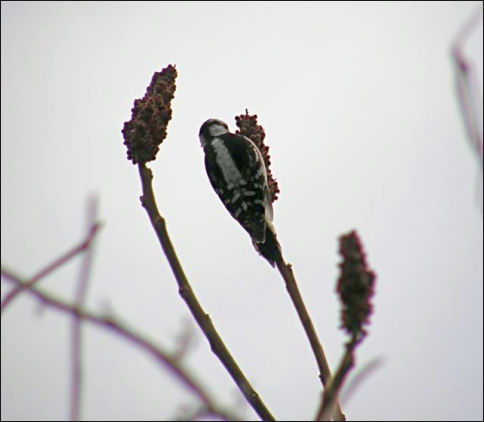
Though this plant is not a “weed” I decided to include it in the Winter Weed series because it’s such an important food for birds.
Staghorn sumac is a shrub-like tree in the Cashew family that often forms thickets. In autumn it drops its large compound leaves to reveal stout, densely fuzzy twigs with dark red fruit clusters at their tips.
The clusters are shaped like candle flames and, like flames, they point upward. The fruits are small reddish berries about the size of peppercorns studding the structure. Birds perch on the clusters and pull off the fruits, as this downy woodpecker is doing. Even when most of the fruits are gone the “candle flame” structures persist through the winter.
Though birds like the fruit they ignore staghorn sumac in fall and early winter, just as they ignore crabapples, because they aren’t palatable yet. This winter the crabapples were ready to eat first. Freezing weather in December softened the crabapples so that by early January the starlings and robins mobbed the trees and left a mess on the sidewalk.
They still ignored the sumac until last weekend. On Sunday I found a flock of robins feasting on staghorn sumac in Schenley Park. Some of the berries sprinkled the snow with tiny red dots.
When I found the dots I looked up. What a good clue for finding birds!
(photo by Marcy Cunkelman)